What are the benefits of crate training a puppy? Crate training is the most common approach to dog training. Of course, the main advantage is not so much training as simply having a dry area for your puppy to rest.
It is not enforced independently for this reason, as it has several dusts, aware granting improvements that help puppies, in particular, adopt within the and how they are raised. Let’s examine why it is perfect for you and your little fella!
What Are the Benefits of Crate Training a Puppy?
Here are 12 benefits of crate training a puppy:
1. Provides Safe Space for Your Puppy
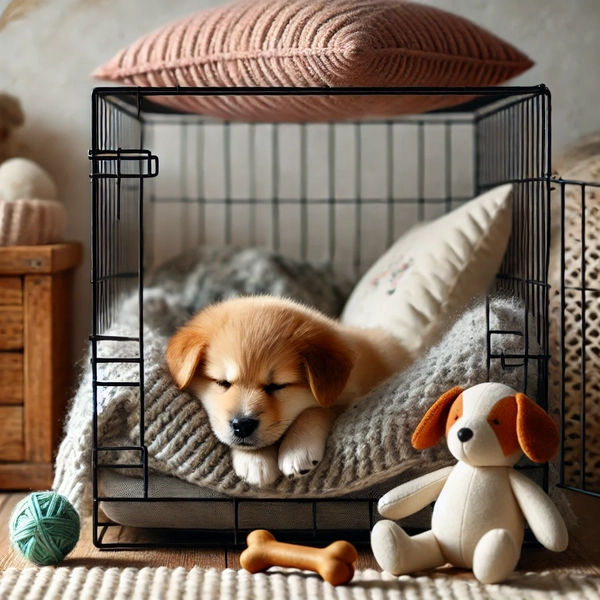
Puppies desire a soft, safe nook to lie in and feel at ease. This is where a crate is proper; it will act as a dog’s den. It’s best to accompany this to avoid confusing it with getting a dog bed for puppies.
Such bedding is meant for them regardless of size, as they need a place free of activity and, most importantly, noise to rest in.
- Prevention: Puppies are curious and may play and bite things that can harm them. A dog cage is a haven where you cannot keep an eye on them.
- Soothing: Puppies learn calming habits, such as knowing where their personal space is and that there is a safe place in case they need to rest.
Place a blanket and pillow to make it more attractive. Add a few toys to make the place resemble a home.
2. Helps with Potty Training
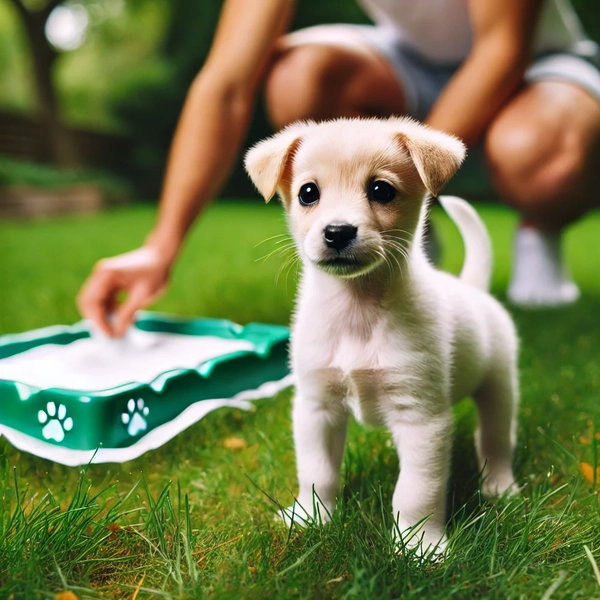
Potty training is often considered the most challenging aspect for new puppy owners. Crate training eases the burden and shortens the time required to achieve this usually difficult entailment.
- Puppies are naturally clean animals. They are preventing young puppies from relieving themselves or on babies if they cannot, which will be very difficult, as the puppies are usually kept exceptionally clean. The crate will also help, as the puppy will learn to wait until he is taken outside after he has been created.
- Schedule: Once you provide a time regime after which a puppy will be removed from the crate for toileting purposes, it can learn the appropriate time to empty its bladder. This creates a dependable routine over the years.
Here is a simple potty training schedule that you can try yourself:
| Time | Activity |
| Morning | Take your puppy outside right after waking up. |
| After Meals | Puppies usually need to go potty 10-15 minutes after eating. |
| Playtime Breaks | After playing, let your puppy go outside. |
| Bedtime | One last potty break before sleeping. |
3. Prevents Destructive Behavior
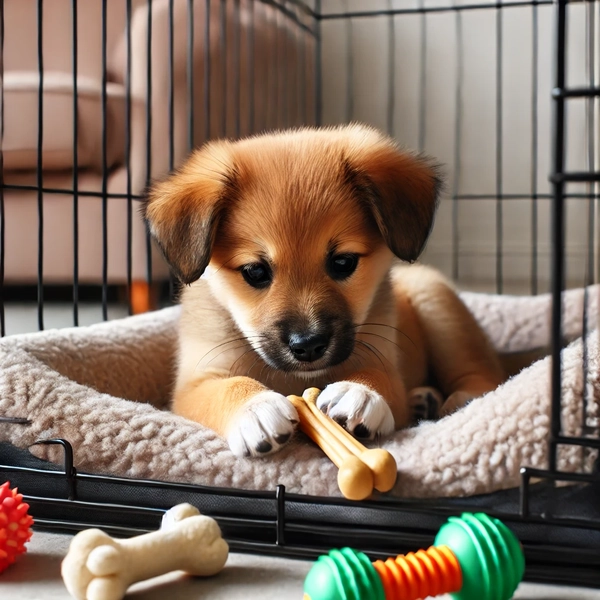
Puppies tend to taste everything that comes into their reach. This habit can lead to chewing things that they are not supposed to.
If your pup is not overseen, they will enjoy a variety of soft toys such as shoes, furniture, and even electrical wiring.
- Chew-proof Zone: While your pup is inside a crate, you need not worry about them getting into any vice or damaging your valuables.
- Guiding Behavior: This process is instrumental in making your puppy learn to differentiate between what is allowed as a chew, a chew toy, and what is not permitted in your old, expensive shoes!
Important Note: Puppies are not hated even when they tear things. It is an instinct fueled by growing teeth and things.
Therefore, giving them a particular area with appropriate objects available curbs unacceptable actions.
4. Eases Anxiety and Stress
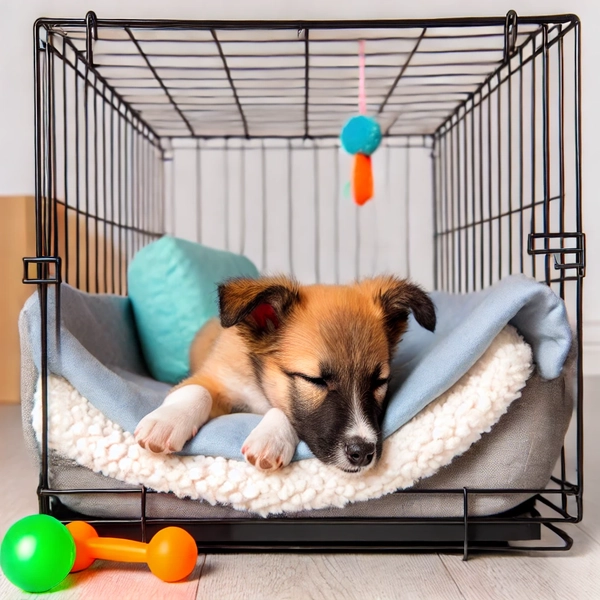
Like other human beings, puppies develop anxiety, particularly in innovative places. A crate acts as a comfort zone, enabling the puppy to stay there when it becomes agitated.
- Normal Sphere Of Influence: When puppies understand that a crate is their territory, they withdraw to the crate when excess pressure is applied.
- Easy-going Traveling: If the crate is used during travel, it serves its purpose because the puppy has already gotten used to it. The puppy finds calming down during a car ride or even in the vet’s clinic easy.
When you come home after a long and tiring day and only want to sink back into your cozy chair, the crate gives the puppy the same feeling.
5. Fosters Self-Reliance
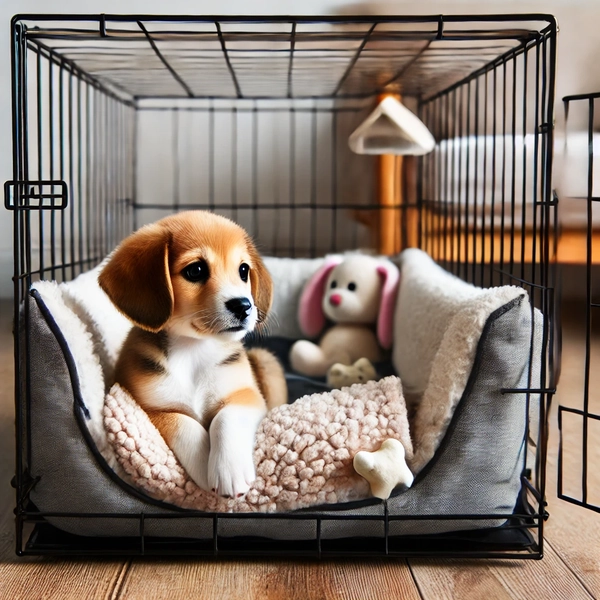
Snuggling with a friend-like pet is interesting, but in the same vein, they ought to learn how to overcome short periods of being alone.
- Learning Management: Using the crate, on the other hand, may be effective if done for a short period. It helps the puppy cope with the situation by alleviating its fears of being left alone.
- Gains Comfort: A puppy that has gotten used to being calm and entertaining itself without its owner is less likely to suffer from separation stress once its comfort-residing owner is no longer present.
Fun Fact: Puppies who are used to traveling in a crate tend to be braver because they have a designated space where they know there are no external disturbances, whether you are there or not.
6. Assists in House Training
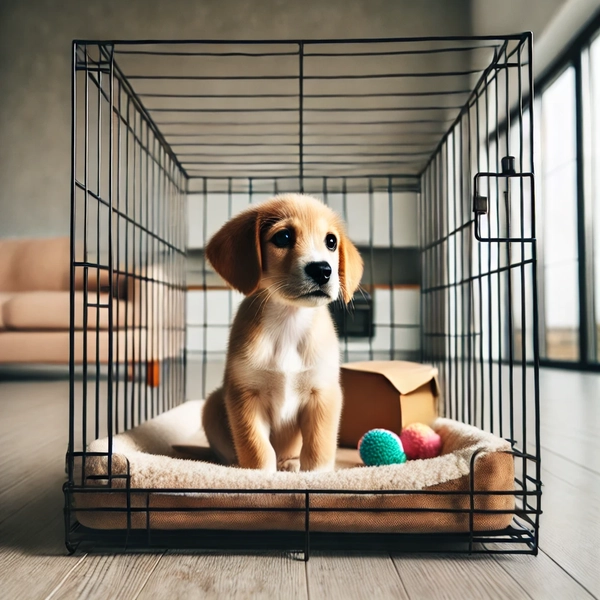
Potty training is an uphill task without the right equipment. Crating works effectively because it teaches puppies the do’s and don’ts of a household.
- Helps Build Boundaries: As the puppy is out of the crate, teaching your puppy where it is permitted in the house can be slowly introduced. They understand that being in the crate means rest, and being out of the crate when outside means playtime or going to the potty.
- Easier Monitoring: At the onset, allowing your puppy only a certain degree of freedom will allow you to monitor them when they are out of the crate. This also enables you to deal more rapidly with lapses in pooh-bearing behavior.
7. Puppy Safe During Travels

If you ever think of taking your puppy on a drive or a flight, a crate will be the best mode of transportation.
A travel crate will solve the problem of them loving to move around too much and becoming over-stressed.
- Car Crates: Puppies prone to movements during car rides should be placed in a crate to minimize their activity and reduce their chances of sustaining injuries.
- Airplane Regulations: Pets must be placed in a properly ventilated, secure crate during almost all flights. This is better done through early-age training for the pup.
Caution: Always train your puppy to cope with short car rides before embarking on long journeys to prepare them.
8. Establishes a Routine
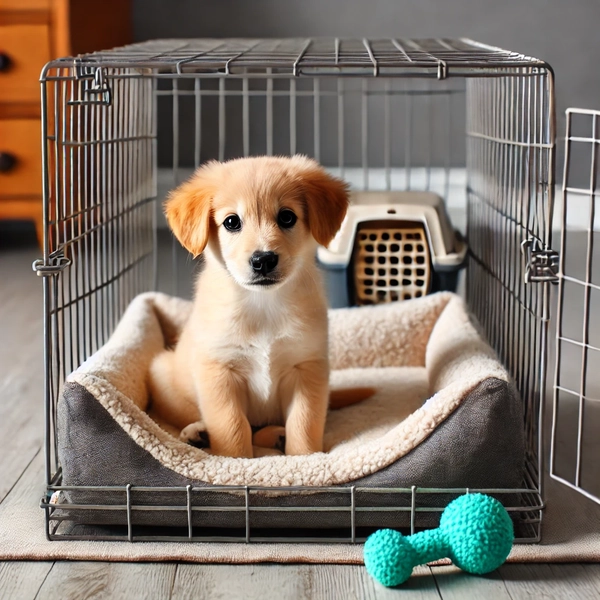
Crating creates a schedule for your puppy. Given a timetable that you follow, your puppy is aware of when it is time to feed, play, or go out.
- Order: Puppies are better off when they are aware of what will happen on a particular day. A crate is one way of establishing a daily order they can count on.
- Behavior Modification: When a schedule is in place for puppies, there will be fewer pooh-pooh incidents and less undesirable behavior displayed.
9. Eases Trips to the Vet or Groomer
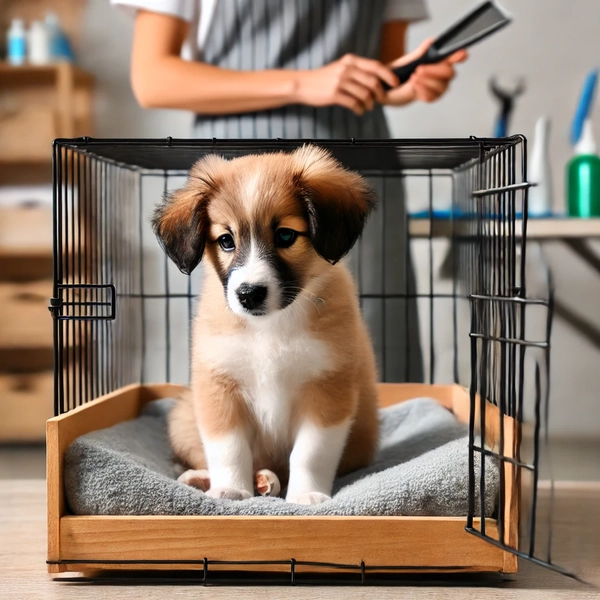
When a dog is crate-trained, such as in many puppies, they are better prepared to cope with being in a lonely place, thus assisting the dog to groomer or veterinarian visit.
- Comfort Zone: Being comfortable with a crate will make them more amenable to other tense situations, such as a kennel or even a groomer’s station, as they would expect similar enclosures.
- Reduces Fear: Puppies do not fear similar places they have been before, even if they are in a new place.
10. Establishes a Sleeping Pattern
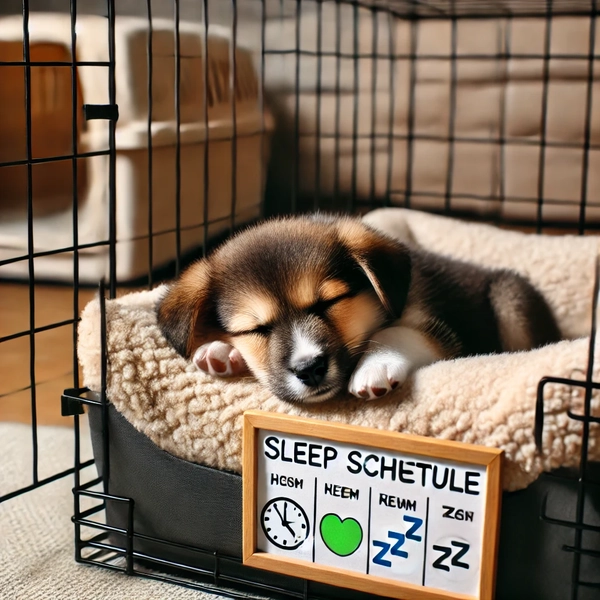
Crate training would also help moderate your puppy’s sleeping period. Just like babies, puppies have to take many short periods of sleep during the day.
- Restful Naps: Puppies learn that a crate is for sleep so they can take uninterrupted sleep.
- Nighttime Activities: If you put your puppy in a crate at night, he is likely to fall asleep during the night, which will benefit you both.
11. Helps Transition to an Adult Dog Bed
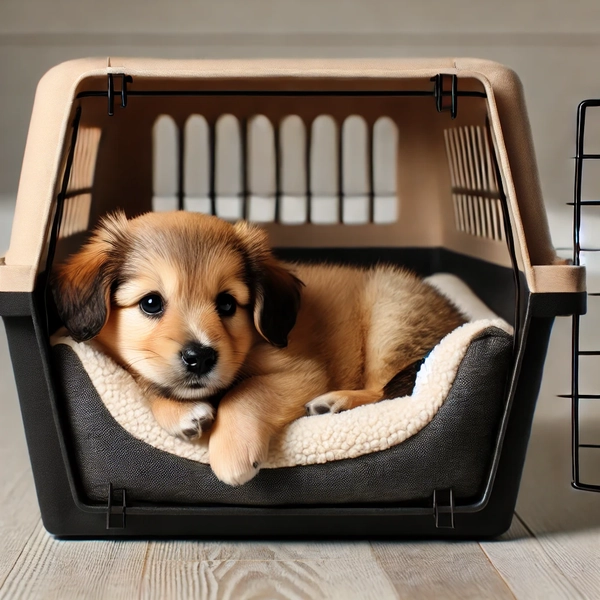
You are likely to train a puppy over time, and as it grows, it will grow beyond the capacity of the crate.
However, the training within the crate and the practices and sequences of actions you achieve in crate training remain in them.
When prepared correctly, crate training is the best way to teach a dog how to sleep on a bed or elsewhere as an adult.
- Gradual Transition: As your puppy gets used to sleeping in a small space without fuss, it becomes easier to transition when you upgrade him to a giant bed.
- Retains Good Habits: The positive behaviors taught while in the crate, such as resting silently or sleeping at night, are retained after the crate is no longer helpful.
12. Strengthens the Relationship Between You and Your Puppy
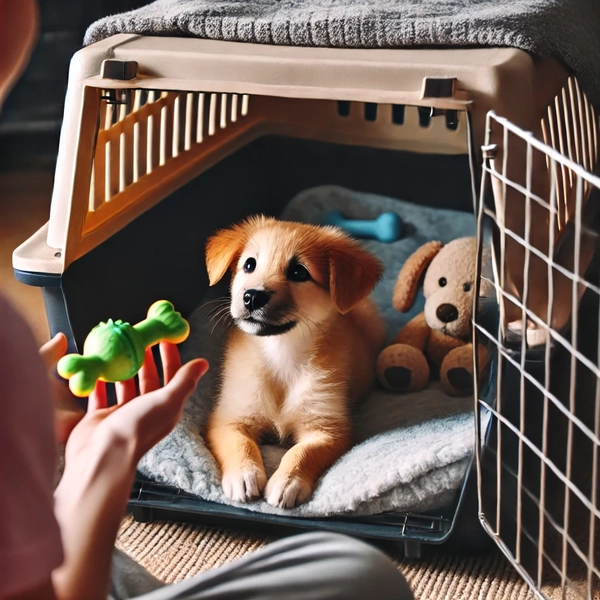
Crate training is not only beneficial for the puppy, but it also gives a chance to become more attached to the puppy.
Fixing a crate for your puppy indicates they can rely on you to provide a warm and secure space.
- Foster Assurance: The pup will see the crate as a safe space you designed, improving the trust bond between you.
- Enhancing the Relationship: Every time the dog is positively reinforced for entering the crate, it enhances the training and bonding relationship between you and the dog.
Advice: Make use of praise and rewards when the dog steps into the kennel. This helps them understand that there are some benefits of the enclosure.
Final Remarks
What are the benefits of crate training a puppy? Crate training teaches many methods to the owner and the puppy. It not only instills the proper behavior in the pet but also allows a safe space for the pet to grow, learn, and thrive without fear.
This includes helping the puppy not mess in the house and developing good behavior in the pup for later years. All these aspects contribute to the purpose of creating a puppy.
Therefore, if you ask yourself how to train your puppy best, crate training will greatly help. It instills good behavior and helps the puppy feel secure in a stable environment from an early age.